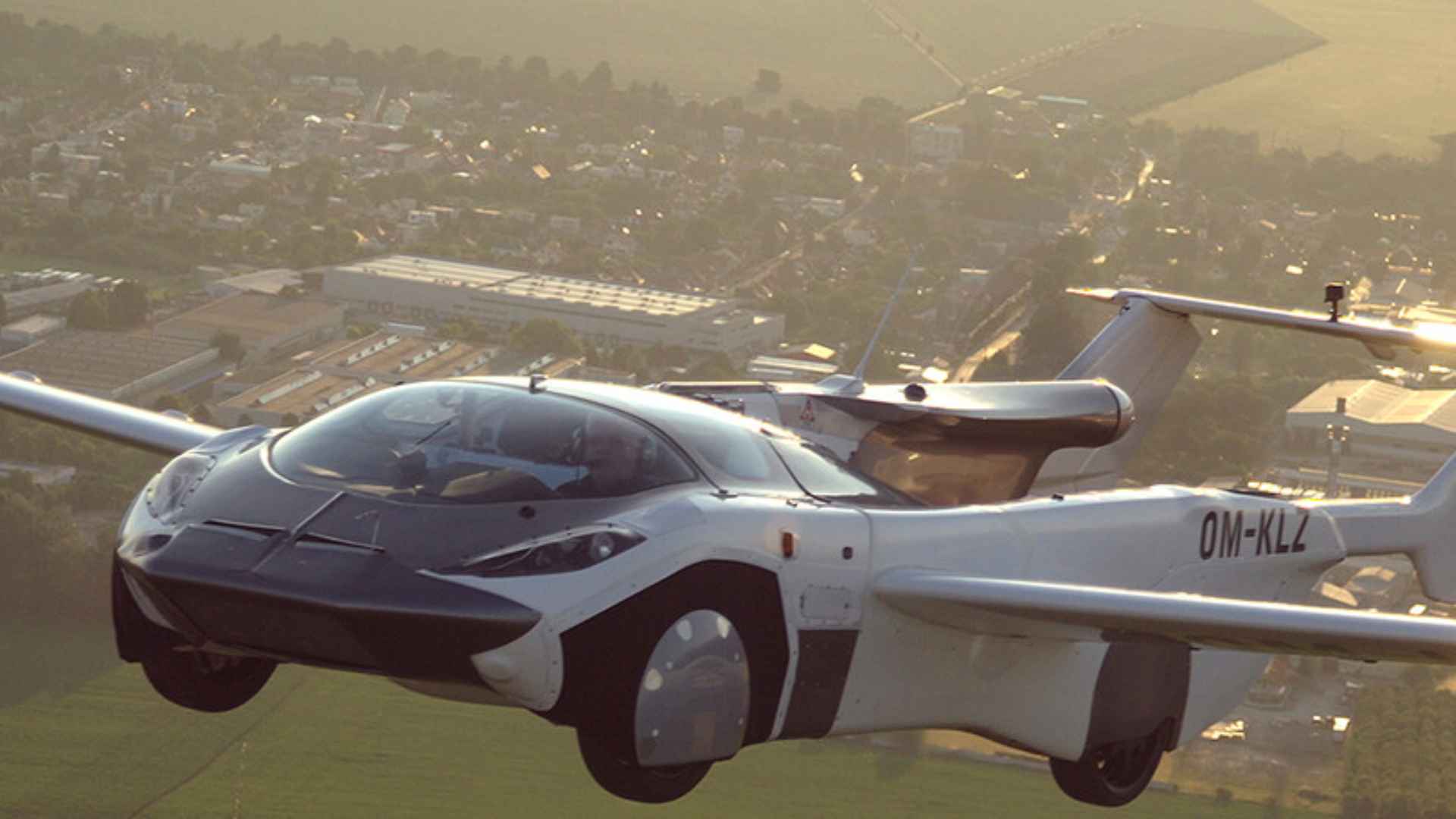Imagine rising above gridlock instead of crawling through it—that’s the promise of Klein Vision’s newly certified AirCar, expected on U.S. roads and runways in 2026.
Drivers, commuters, and even small businesses stand to gain. The company plans roughly 100 units a year at $800,000–$1 million each, turning what could be a two‑hour slog into a 30‑minute hop. At rest the six‑meter AirCar looks like a sleek coupé no wider than an SUV. Tap a dashboard button and, in 80 seconds, wings and tail unfold while a 280‑horsepower V‑6 shifts from the wheels to a rear propeller.
Top speeds reach 124 mph on pavement and 155 mph in the sky, backed by a 1,000‑kilometer flight range and a service ceiling of 10,000 feet. Handy, right?
What makes Klein Vision’s AirCar different from earlier flying car prototypes
Many concepts stalled at the paperwork stage. After 170 flight hours and 500 takeoffs and landings, the AirCar earned an airworthiness certificate from the Slovak Transport Authority in 2022 and is now courting U.S. regulators.
Prospective owners will need both a driver’s license and a private‑pilot certificate—are weekend flight lessons in your future? Before diving into policy debates, check how the AirCar compares with everyday options.
| Feature | AirCar | Conventional car | Regional jet |
|---|---|---|---|
| Cruise speed | 155 mph | 65 mph | 450 mph |
| Door‑to‑door flexibility | High | High | Low |
| Runway required | Short airstrip | None | Full airport |
| Typical price | $0.8–1 M | $40–70 K | $30–40 M |
Challenges that could slow down the future of personal aviation in cities
Urban air corridors, noise limits, and miniature “vertiports” must be mapped out long before skies fill with hybrid vehicles. Insurers, meanwhile, are puzzling over risk models for a machine that drives like a sports car yet flies like a light plane. Nevertheless, regulators tend to move faster once certified hardware exists—drones prove that point. Quick pros and cons at a glance:
The AirCar’s advantages and drawbacks fall into four easy bullet points:
- Skips surface congestion entirely
- Transforms with one button and no tools
- Requires dual licensing plus basic runway access
- Burns gasoline, so emissions questions linger
Bottom line: if federal certification stays on track, early adopters could lift off by late 2026, trading rush‑hour misery for a quick flight—and maybe inspiring the rest of us to look up instead of honk.

